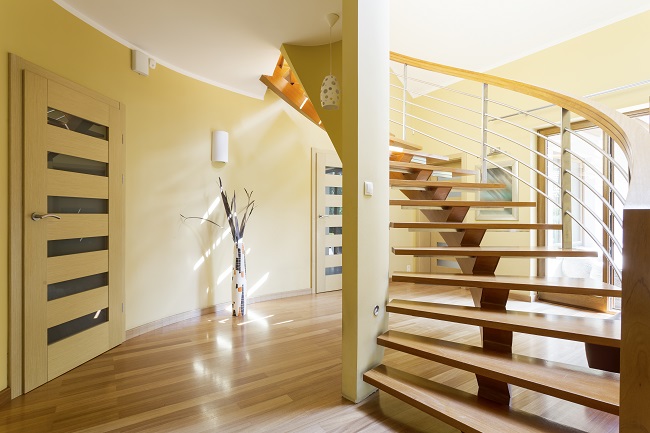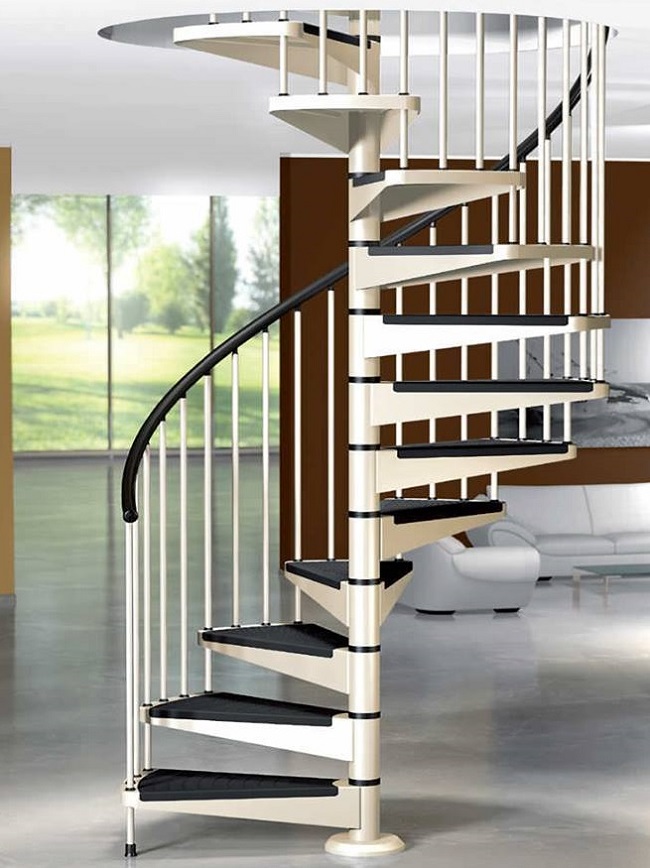Cantilevered stairs are made of different materials, and shapes. These stairs have treads in an angular shape, and these are usually used with various types of timber. These stairs are fixed into the wall without any visible fixing element and they usually do not have railings. Sometimes they may have railings which are minimalistic, and made of glass or stainless steel.
There are different variations in cantilevered stairs which are like concrete. The thickness of these stairs can be decreased unlike standard concrete stairs which are 130 mm thick in each tread. These cantilevered stairs can be 60 mm. However, for commercial uses, cantilevered stairs can be made much thicker than usual and increased up to 150mm thickness.
Cantilevered stairs are suitable either for helical or curved shapes. You can even find conical ones. There are also cantilevered steps which are leveled where the thickness decreases along the eye of the stair. This design gives the stairs a bulging and rounded shape. These cantilever stairs can be made of acrylic.
Cantilevered stairs have a beam with just one end anchored. The steps are anchored into walls which bear the entire load. Stairs also can be embedded into beams which in turn are embedded into the wall with steel bolts or pins. This gives the look of floating stairs.
Cantilevered stairs have an assembly for each step which comes with a tread and two brackets. A telescoping stud for support and bolts are included as well. The study is first installed into the steel or the concrete beam using the brackets which protrude outwards. Then the wall is built around these brackets. The finished treads are then bolted. These treads are made of wood or steel. Some treads are made of steel, but are covered with wood. These steps need to be installed only by a structural engineer so that they are rigid and horizontal despite use and time.
Materials Used for Cantilevered Stairs
- Wood stairs are usually wooden steps which are clad in steel studs. They are fixed to the steel beam which is on the wall. The treads need to be thick to allow the steel support structure. If the thickness needs to be reduced, wooden planks which rest on t-section plates can be used. Usually, the stringer which is used to support the steps is well hidden in the wall.
- Stainless steel cantilevered stairs are usually used with glass balustrades. This gives the stairs a floating effect. Or else a T shaped steel tread is anchored into the wall.
- Glass cantilevered stairs are popular, and they need to be made of tough glass which is thick and at least 32 mm. Such stairs are ideal for homes with modern or contemporary décor.
Stone tread or concrete cantilevered ones are also popular as they are very strong and long lasting. The advantages of cantilevered stairs are that they appear to be light, and they allow light to come in from different levels. They also appear to be floating. Such stairs give the place a very dressed up and rich look. The disadvantages are sometimes if not done correctly, the stairs may sag in time at the ends. A balustrade is not added as it spoils the overall look. However, this is quite dangerous especially when children or senior citizens use these stairs. People also feel that they may slip through cantilevered stairs. These steps too need to be designed very well or else they will prove very dangerous, and may even result in fatal accidents.
















